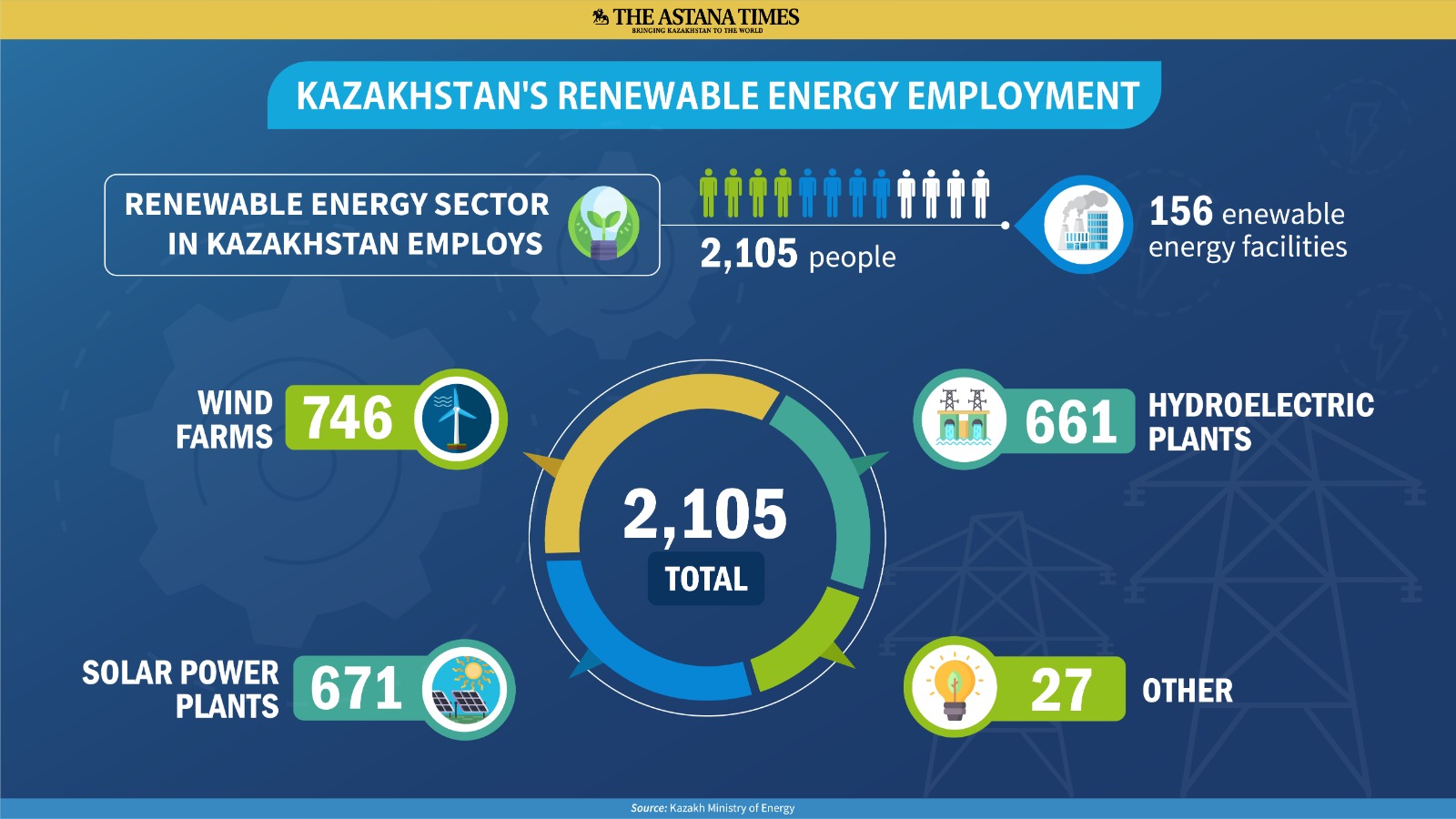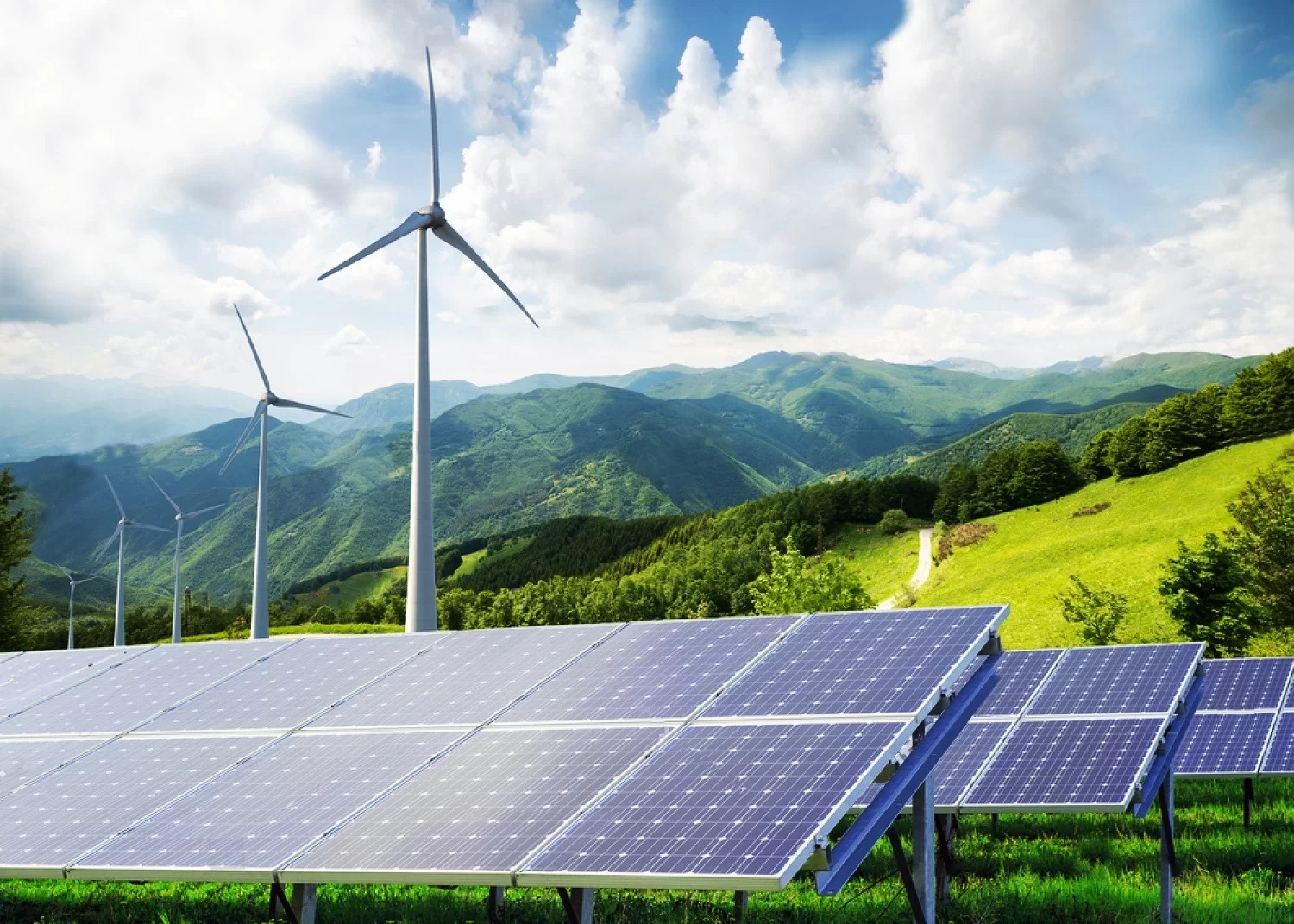ASTANA – In recent years, Kazakhstan has been making efforts to lay the foundation for the country’s low-carbon development. But beyond the Paris Agreement and the transition to net-zero emissions lies a challenge: where are the workers who will bring the government’s green agenda to life? The Astana Times is examining whether the country will be able to train enough specialists to meet this demand or if it will need to rely on foreign experts.

Photo credit: Shutterstock
With Kazakhstan’s commitments to achieve carbon neutrality by 2060, there is now a chance to reconfigure the job landscape while putting the environment at the center.
Global outlook
Thousands of jobs are expected to be created by the needs of a low-carbon economy.
Globally, the green jobs market is growing fast. According to the 2024 edition of the International Renewable Energy Agency’s (IRENA) Renewable Energy and Jobs Series, there were 16.2 million global renewable energy jobs in 2023, up from 13.7 million in 2022. In this regard, China invests far more in renewable energy than any other country and, as a result, employs 46% of the world’s green workforce.

Infographic by The Astana Times.
Solar energy leads in global renewable energy employment by technology, accounting for 7.1 million jobs in 2023, followed by 2.8 million biofuel jobs, 2.3 million direct jobs in hydropower, and 1.5 million wind power jobs.
According to the Future of Jobs Report 2025 by the World Economic Forum, green transition, along with technological change, geoeconomic fragmentation, economic uncertainty, and demographic shifts, will be among the major drivers in transforming the global labor market by 2030.
The report lists renewable energy engineers, environmental engineers, and electric and autonomous vehicle specialists among the 15 fastest-growing jobs.
The picture, however, is not uniform across the regions. For example, in Central Asia, only 19% of survey respondents view climate trends as relevant to the business activities of their companies.
Kazakhstan’s green job market
Kazakhstan’s green transition ambition will require a change in educational and social policy on a similar scale.
According to the latest data from the Ministry of Energy, the renewable energy sector in Kazakhstan employs 2,105 people across 156 renewable energy facilities. Among them, wind farms provide the most jobs with 746 employees, followed by solar power plants with 671, and hydroelectric plants with 661 workers.

Infographic by The Astana Times.
“At the same time, we have to take into account professionals who work in governmental organizations, financial institutions, academia, engineering and supply companies, whose activities are focused on the development of renewables. Thus, there are a few thousand professionals already employed in the renewable energy sector – the youngest sector of the economy in Kazakhstan,” Nurlan Kapenov, chairman of the board of directors of the Qazaq Green renewable energy association, told The Astana Times.
Women still comprise a smaller portion of the green workforce, accounting for 292 workers, or around 14%.
Compared to global data, these numbers may seem modest, but by 2030, Kazakhstan could have 12,000 green jobs.
According to the ministry, Kazakhstan plans to launch 91 renewable energy projects with a total installed capacity of 2,258 megawatts under agreements with the Financial Settlement Center for Renewable Energy Sources by 2030. In addition, large-scale renewable energy projects with a combined capacity of 3.8 gigawatts will be developed with the participation of international companies, including Masdar, TotalEnergies, China Power, and China Energy.
The implementation of these projects will create approximately 12,000 temporary jobs. This means there is enormous potential for green growth. Unless there is a clear strategy and necessary skills in place to take advantage of the green transition, Kazakhstan risks missing out on net-zero targets and a fair transition. Policymakers and relevant institutions are addressing this near-term demand with training, upskilling, and job-matching policies.
A closer look at Kazakhstan’s educational programs
The Kazakh Ministry of Science and Higher Education reported that the register of educational programs, which contains 8,058 programs, now includes 33 new programs in the field of energy.
Among them are programs such as renewable energy, innovative technologies and equipment in renewable energy, modern and innovative technologies in renewable energy, hydropower, strategic management of renewable energy and energy efficiency, energy and environmental engineering, among others.
There is a vast array of courses in this industry, including industrial energy, energy and environmental engineering, technology, calculations, modeling of renewable energy sources, cryogenic engineering, alternative energy and energy-saving technologies, and hydrogen energy technologies.
“Today, universities independently determine their academic policies. Many operational and procedural issues are resolved at the university level. (…) As a result of this work, universities now independently develop and update educational programs in close cooperation with employers, taking into account the needs of economic sectors. It is the market that dictates demand, which is an indicator of the quality of educational services. In turn, this will increase competition, improve quality, and allow for greater flexibility and faster response to any changes,” said the ministry in a comment for this story.
According to Nurlan Kapenov, because the green transition in Kazakhstan is a gradual process, the corresponding educational adjustments are also taking place step-by-step.
“Since traditional stations will operate until the end of their life cycle, the change of generations will facilitate the evolutionary energy transition. Moreover, we have to understand that renewables are part of the electric and heating power sectors. Thus, the education on electric and heating power majors is core even for renewables,” said Kapenov.
“Renewable energy can become an add-on to basic energy education. In this regard, we support the tendencies in some universities of Kazakhstan aimed at opening courses and educational programs and conducting research in renewables – Nazarbayev University, Almaty Energy and Telecommunication University, Satbayev University, Kazakhstan-German University,” he said.
Skills gaps and emerging professions
Professionals in new technologies such as energy storage systems and smart grid might be in short supply in the future, Kapenov noted.
“In the green development, we have to assume the rapid development of technologies. And, certainly, we have to consider renewables as a part of the power sector. For example, the current technological trends are aimed at the utilization of energy storage systems, smart grid technologies, the development of renewables in heating, and green hydrogen. As a new technological trend, they require a new skilled professional. Thus, academia and universities should be flexible and be ready to catch these trends to secure the training for the needs of the industry,” he said.
The push to decarbonization is also creating new career paths, particularly around green hydrogen.
“It should be noted that the atlas of new professions, whose main purpose is to analyze modern specialties and identify future labor market trends, is taken into account when developing and updating educational programs. According to the atlas research, a new profession is expected to emerge in the energy sector: hydrogen energy engineer,” said the Kazakh ministry.
According to the ministry, disciplines and courses on hydrogen energy are included in several master’s degree programs in technical fields. These programs focus on training specialists to work with hydrogen technologies, fuel cells, and green energy. They are offered at Gumilyov Eurasian National University in Astana, Shakarim University in Semei, and Yessenov University in Aktau.
Nuclear energy
With Kazakhstan building its first nuclear power plant, there will be a need for new skills in a sector that has not existed before. The task of preparing skilled workers in the nuclear energy sector had been in focus too, according to the ministry.
“A branch of the National Research Nuclear University MEPhI [based in Moscow] has been opened at Al-Farabi Kazakh National University to train highly qualified engineering and technical personnel per international educational standards, capable of solving the most important scientific, technological, and production tasks in the interests of the nuclear energy industry. Training is conducted under the educational program Elementary Particle Physics and Cosmophysics,” reads the report.
Professors from Sakarya University in Türkiye, Tomsk Polytechnic University and Altai State University of Russia, and Pusan National University in South Korea deliver lectures to students enrolled in the program.
Joint scientific research in nuclear physics is carried out with the Budker Institute of Nuclear Physics and Tomsk Polytechnic University. Students also undergo practical training at local enterprises such as Ulba Metallurgical Plant, the Institute of Nuclear Physics of Kazakhstan, and the National Nuclear Center of Kazakhstan in Kurchatov.
Starting in the next academic year, the Kazakh-British Technical University, in collaboration with Kazatomprom national atomic company, has introduced a new educational program titled Uranium Business. The program aims to train qualified engineers for the domestic nuclear industry and has been developed in line with the modern requirements of the global nuclear industry.
“The curriculum has been developed in close cooperation with leading engineers and specialists in the field of nuclear science. One of the key elements of the program will be an in-depth study of technical English, which will ensure the competitiveness of graduates in the global market and their participation in international projects,” said the ministry.
Fair transition
The rate of transition to green jobs is rising, but another concern is that workers from conventional fossil fuel industries are being left behind. Speaking to The Astana Times, the ministry said Kazakhstan’s strategy for achieving carbon neutrality ensures a fair transition.
“Workers involved in fossil fuel extraction who are at risk of losing their jobs in the process of energy transformation should be protected by social protection measures, retraining and reskilling programs, and the creation of new jobs in low-emission industries. Programs will be developed for this category of persons, offering alternative employment and retraining to carry out activities in new green areas,” reads the nation’s carbon neutrality strategy.
To ensure a fair transition, the ministry is implementing measures such as retraining programs in renewable energy, hydrogen, energy auditing, and carbon asset management. Other efforts include the establishment of regional centers in partnership with universities and colleges, engagement of the private sector and international organizations in pilot internships and employment initiatives, and the use of carbon pricing and market mechanisms to drive structural change.
Overall, a shift to clean energy in Kazakhstan is inevitable and will require a workforce with new skills. Building that workforce depends on investments in training and human capital, which are already underway, though only time will show whether Kazakhstan will be able to keep up with the rising demand for green jobs.
